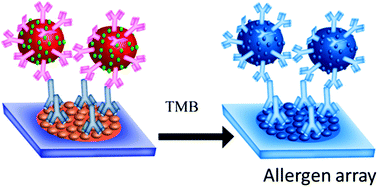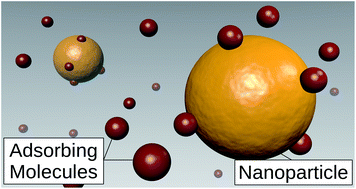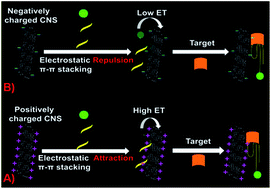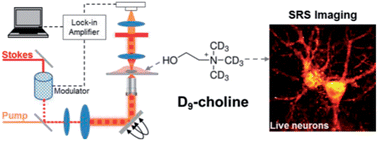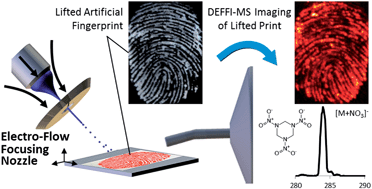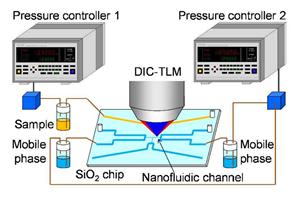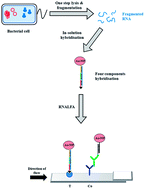Take a look at our new HOT articles just published in Analyst and free for you for the next couple of weeks: 
An antibody-free microfluidic paper-based analytical device for the determination of tear fluid lactoferrin by fluorescence sensitization of Tb3+
Kentaro Yamada, Shunsuke Takaki, Nobutoshi Komuro, Koji Suzuki and Daniel Citterio
Analyst, 2014, Advance Article
DOI: 10.1039/C3AN01926H, Paper
Protein binding for detection of small changes on a nanoparticle surface
Shang Zeng, Yu-ming M. Huang, Chia-en A. Chang and Wenwan Zhong
Analyst, 2014,139, 1364-1371
DOI: 10.1039/C3AN02155F, Paper
Proteomic evaluation of citrate-coated silver nanoparticles toxicity in Daphnia magna
Louis-Charles Rainville, Darragh Carolan, Ana Coelho Varela, Hugh Doyle and David Sheehan
Analyst, 2014, Advance Article
DOI: 10.1039/C3AN02160B, Paper
Oxidized polyethylene films for orienting polar molecules for linear dichroism spectroscopy
Kasra Razmkhah, Nikola Paul Chmel, Matthew I. Gibson and Alison Rodger
Analyst, 2014,139, 1372-1382
DOI: 10.1039/C3AN02322B, Paper 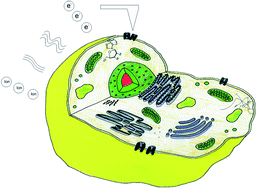
Solid-phase extraction and purification of membrane proteins using a UV-modified PMMA microfluidic bioaffinity μSPE device
Katrina N. Battle, Joshua M. Jackson, Małgorzata A. Witek, Mateusz L. Hupert, Sally A. Hunsucker, Paul M. Armistead and Steven A. Soper
Analyst, 2014,139, 1355-1363
DOI: 10.1039/C3AN02400H, Paper
Non-invasive mouthguard biosensor for continuous salivary monitoring of metabolites
Jayoung Kim, Gabriela Valdés-Ramírez, Amay J. Bandodkar, Wenzhao Jia, Alexandra G. Martinez, Julian Ramírez, Patrick Mercier and Joseph Wang
Analyst, 2014, Advance Article
DOI: 10.1039/C3AN02359A, Paper
Making a big thing of a small cell – recent advances in single cell analysis
Kerstin Galler, Katharina Bräutigam, Christina Große, Jürgen Popp and Ute Neugebauer
Analyst, 2014,139, 1237-1273
DOI: 10.1039/C3AN01939J, Critical Review
Advances in nanowire transistors for biological analysis and cellular investigation
Bor-Ran Li, Chiao-Chen Chen, U. Rajesh Kumar and Yit-Tsong Chen
Analyst, 2014, Advance Article
DOI: 10.1039/C3AN01861J, Critical Review
High resolution magic angle spinning NMR as a tool for unveiling the molecular enantiorecognition of omeprazole by amylose-based chiral phase
Juliana Cristina Barreiro, Tiago de Campos Lourenço, Lorena Mara A. Silva, Tiago Venâncio and Quezia Bezerra Cass
Analyst, 2014,139, 1350-1354
DOI: 10.1039/C3AN02029K, Paper 
Intra-molecular reactions as a new approach to investigate bio-radical reactivity: a case study of cysteine sulfinyl radicals
Kirt L. Durand, Xiaoxiao Ma and Yu Xia
Analyst, 2014,139, 1327-1330
DOI: 10.1039/C3AN02307A, Communication
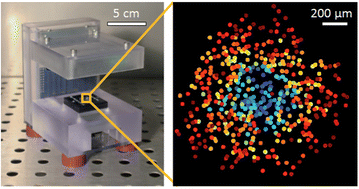











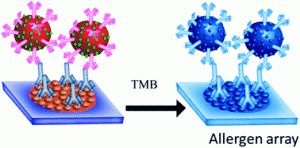 nt surveys from Allergy UK have shown that the rates of allergy are increasing throughout the world, affecting up to 30-35 % of people at some point during their lives, in some cases with fatal consequences. In vitro testing of specific Immunoglobin E (IgE) reactivities is thought to be able to significantly improve diagnostic accuracy and management in primary care. IgE plays a significant role in allergic conditions. Current methods for the sensitive and accurate detection of specific IgE reactivities are expensive; require significant sample preparation and investment in equipment. There is a need to provide a cheap, rapid, sensitive and specific test for IgE reactivities.
nt surveys from Allergy UK have shown that the rates of allergy are increasing throughout the world, affecting up to 30-35 % of people at some point during their lives, in some cases with fatal consequences. In vitro testing of specific Immunoglobin E (IgE) reactivities is thought to be able to significantly improve diagnostic accuracy and management in primary care. IgE plays a significant role in allergic conditions. Current methods for the sensitive and accurate detection of specific IgE reactivities are expensive; require significant sample preparation and investment in equipment. There is a need to provide a cheap, rapid, sensitive and specific test for IgE reactivities.
